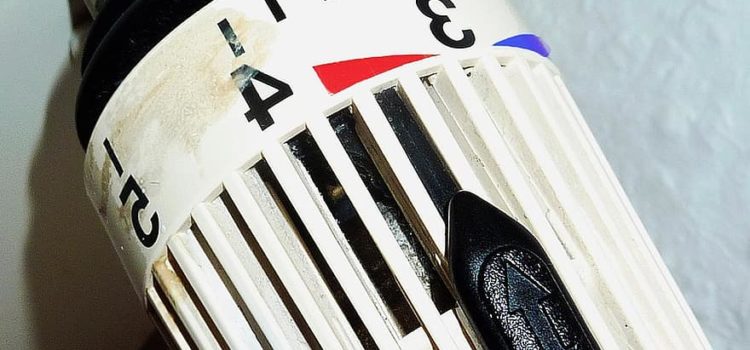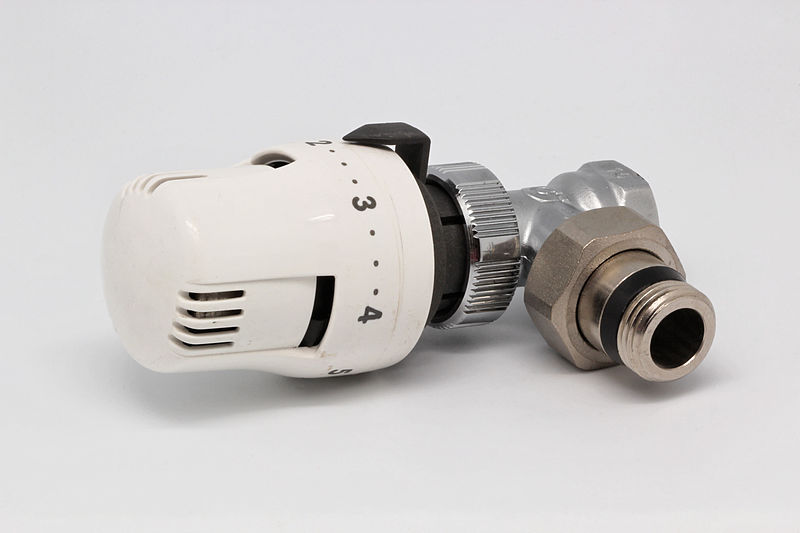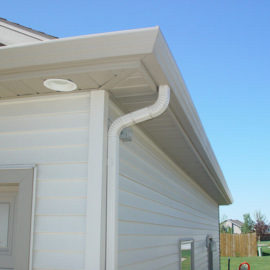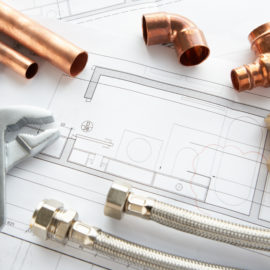
Summary
– Operation of a thermostatic valve
– Save money with thermostatic valves!
– Four things to know about thermostatic valves
– Types of thermostatic valve
– How do I maintain a thermostatic radiator valve?
– Price of this equipment
Thermostatic valves for radiators regulate the amount of heat delivered by the water radiator. This heat increases thermal comfort and reduces energy consumption.
Operation of a thermostatic valve
The thermostatic valve is installed on the hot water inlet pipe of the radiator. It allows you to regulate your room temperature by modulating the flow of hot water entering the appliance. The thermostatic valve, therefore, prevents uncontrolled temperature variations, whether overheating or cooling.
This thermostatic valve resembles an ordinary radiator valve, but it is equipped with a thermostatic head with an integrated sensor.
Save money with thermostatic valves!
Indeed, a temperature regulation as close as possible to your needs allows you to reduce your energy consumption. A thermostatic valve makes it possible to choose the temperature of each room with precision. Not all rooms in your home require the same temperature.
The following is generally advisable:
– 19-20°C for living rooms such as the living room;
– 16-17°C for a bedroom at night;
– 21-22°C for the bathroom;
– 15-16°C for the entrance or corridors;
– and the frost-free position, in case of prolonged absence.
It is common knowledge that a deviation of 1°C, e.g., a setpoint temperature of 19 instead of 20°C, can save up to 7% energy! Of course, this value depends on several parameters: the insulation and surface area of your home, your boiler’s performance, and the outside temperature.
Four things to know about the thermostatic valve

Here are a few things to know about the thermostatic valve:
– A thermostatic head must be mounted horizontally and more than 60 mm from the radiator so that the sensor is not disturbed by the heat emitted by the radiator.
– If the room is heated by sunshine or oven operation, or if many guests are present, the thermostatic valve will close accordingly to maintain the set temperature.
The thermostatic valve must be closed when the window is opened; otherwise, the valve will bring a large amount of hot water, and energy will be wasted.
– A thermostatic valve cannot supply more heat than the boiler delivers, and therefore cannot compensate for a malfunction or under-sizing of the equipment.
Types of thermostatic valve
Other models of thermostatic valves are available:
– The thermostatic valve with remote control, which makes it easy for areas with restricted access.
– And the latest addition, the valve with electronic thermostatic head:
◦ With a digital display, it is more precise.
◦ Easy to install and in any position, it can be fitted like the standard model on the radiator’s hot water inlet.
◦ Programmable, you can define operating time ranges. For example, in your children’s room: a drop in temperature when they leave for school and a temperature rise before they return.
◦ Easy to install in any position.
Caution: no thermostatic valves should be installed in the room if it is already equipped with a room thermostat!
How do I maintain a thermostatic radiator valve?
No special maintenance is required for a thermostatic valve. The only instruction is to leave it open once the heating period has passed and the boiler has been turned off. This easy tip will prevent it from blocking before next winter.
Price of this equipment
Standard and electronic thermostatic valves are available in the same price range from $20 to $40.
Hope the above helps you out. Next time the plumber talks about the thermostatic radiator valve, you’ll better understand what he is talking about.



